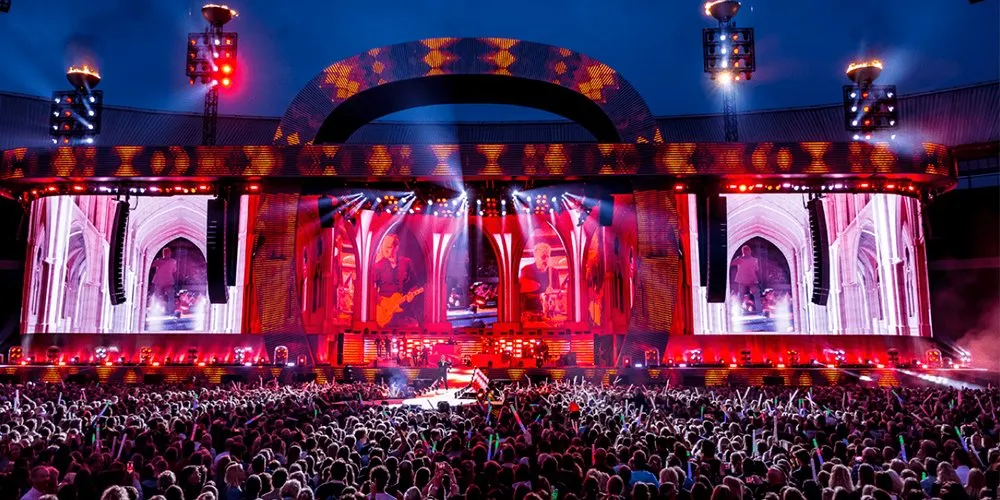With rapid technological advancements, LED displays have become an integral part of our daily lives. From shopping malls and sports arenas to outdoor billboards and exhibitions, LED displays captivate attention with vibrant colors, high-definition images, and flexible display formats.
However, for many, LED displays remain a mysterious and complex area. This guide will take you from novice to expert, covering everything you need to know about LED displays, including their working principles, purchasing, usage, maintenance, and technology trends.
1. Basic Knowledge of LED Displays
1.1 LED Light Emission Principle
LEDs (light-emitting diodes) can be thought of as tiny dancers on a stage. Inside the LED, a semiconductor chip acts as the “dancer,” and when a current flows, this “dancer” moves and releases light. Different materials release different frequencies of light, creating varied colors.
1.2 Classification of LED Displays
- By Pixel Pitch: Smaller pixel pitch results in finer display quality, suited for high-definition venues like meeting rooms and monitoring centers.
- By Display Color: Options include single color, dual color, and full color (RGB), with full-color displays often used in outdoor advertising and stage backgrounds.
- By Display Mode: Static screens show fixed images, while dynamic screens support videos and animations for more engaging content.
1.3 Key Parameters of LED Displays
- Resolution: Higher resolution means clearer images, typically expressed as “horizontal pixels × vertical pixels.”
- Brightness: Essential for outdoor visibility under different lighting conditions, measured in cd/m².
- Contrast: Higher contrast enhances image detail and color vibrancy.
- Viewing Angle: Defines the clear viewing range horizontally and vertically.
- Refresh Rate: Higher refresh rates provide smoother visuals, reducing flickering and color stuttering.
- Gray Scale: Refers to brightness levels, with higher levels providing richer color depth.
- Power Consumption: Lower power consumption reduces energy costs.
- Response Time: A shorter response time minimizes motion blur.
- Lifespan: LED displays can last thousands of hours under normal conditions.
2. Purchasing and Installation of LED Displays
2.1 Buying Guide
- Application Scenario: Indoor/outdoor, viewing distance, and content needs (e.g., high-definition video).
- Budget: Different brands, sizes, and configurations vary widely in cost; consider price-performance balance.
- Brand and After-Sales Service: Reliable brands ensure quality and support in installation, debugging, and maintenance.
2.2 Installation Steps
- Site Selection: Choose a flat, sturdy surface for stability and consider ventilation.
- Bracket Installation: Use suitable brackets based on display size and weight.
- Screen Assembly and Testing: Connect power and signal cables securely, configure software settings, and verify signal integrity.
3. Usage and Maintenance of LED Displays
3.1 Usage Tips
- Avoid Prolonged High Brightness: Constant high brightness can accelerate LED aging.
- Keep the Environment Clean: Clean screens regularly to avoid dust accumulation.
- Reasonable Parameter Settings: Set resolution, refresh rate, and brightness per requirements to prevent damage.
- Limit Frequent Power Cycling: Frequent on/off cycles can impact lifespan.
3.2 Maintenance
- Regular Cleaning: Use soft cloths or special cleaners.
- Connection Inspection: Regularly check power and signal connections.
- Cooling System Check: Ensure fans and heat sinks work correctly to prevent overheating.
- Regular Calibration: Adjust color and image position periodically to maintain display quality.
3.3 Troubleshooting
- Screen Not Lit: Check power and system startup.
- Abnormal Display Quality: Check signal connections and system settings.
- Screen Flickering: This may result from unstable power or a system issue; check connections and seek professional help if needed.
4. LED Display Technology Trends and Innovation
4.1 Technology Trends
- High Definition: Smaller pixel pitches provide finer image quality, enhancing visual experience.
- High Refresh Rate: High refresh rate reduces motion blur in fast-moving scenes.
- Energy Efficiency: LED displays are becoming more energy-efficient with advancements in materials and smart dimming technology.
4.2 Innovative Applications
- Virtual Reality (VR): LED screens combined with VR tech provide immersive virtual experiences.
- Glasses-Free 3D: This technology creates 3D images without needing special glasses, perfect for advertising and exhibitions.
- Interactive Experiences: Combining LED with touch and sensor technology enables interactive displays, engaging audiences in new ways.
By understanding these principles, you can make informed decisions when purchasing, installing, and maintaining LED displays, ensuring they operate effectively and deliver outstanding visuals.
LED display screen continue to evolve, bringing increasingly lifelike visuals, interactive functions, and energy-efficient options. From purchasing to maintenance, understanding these basics empowers you to get the most out of your LED display investment.
Post time: Nov-05-2024

